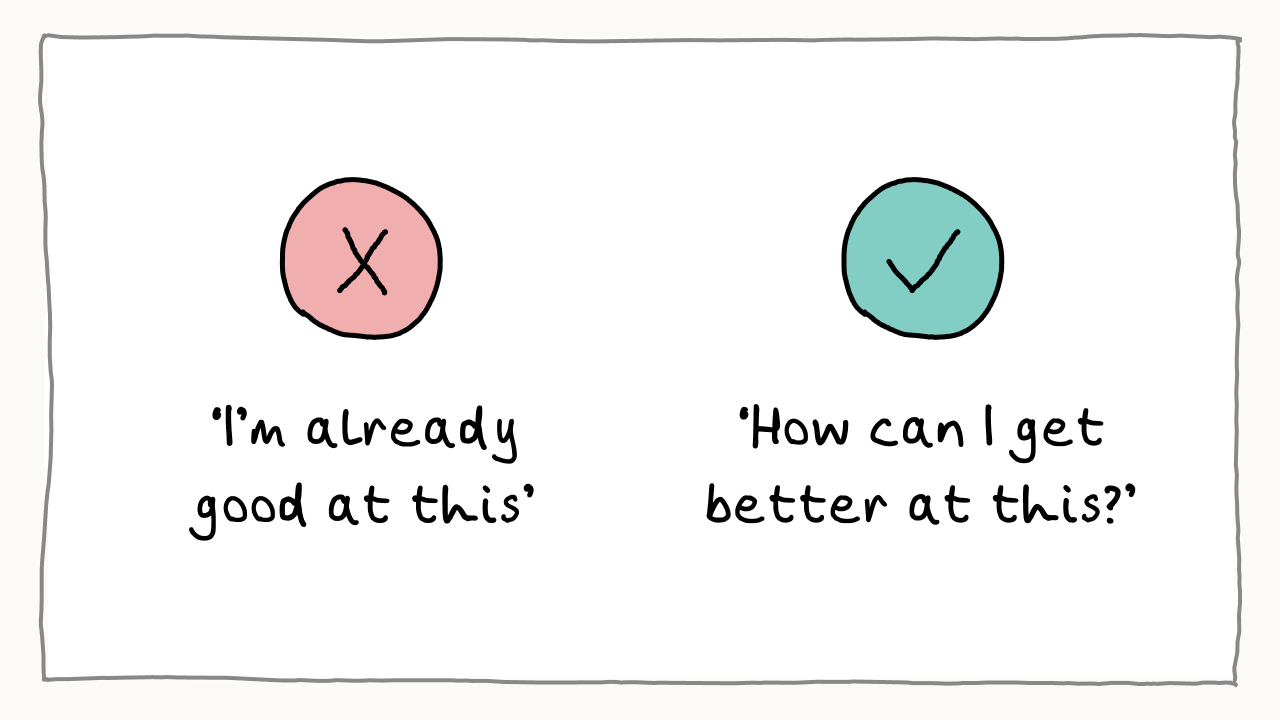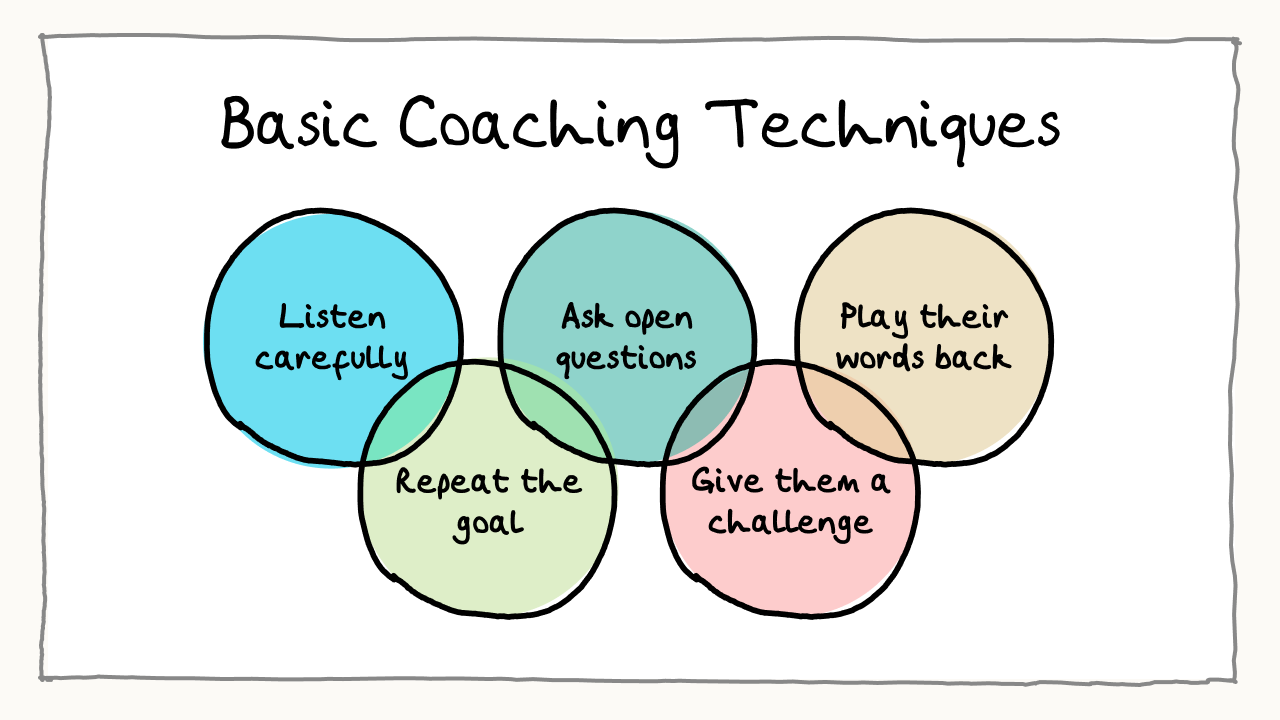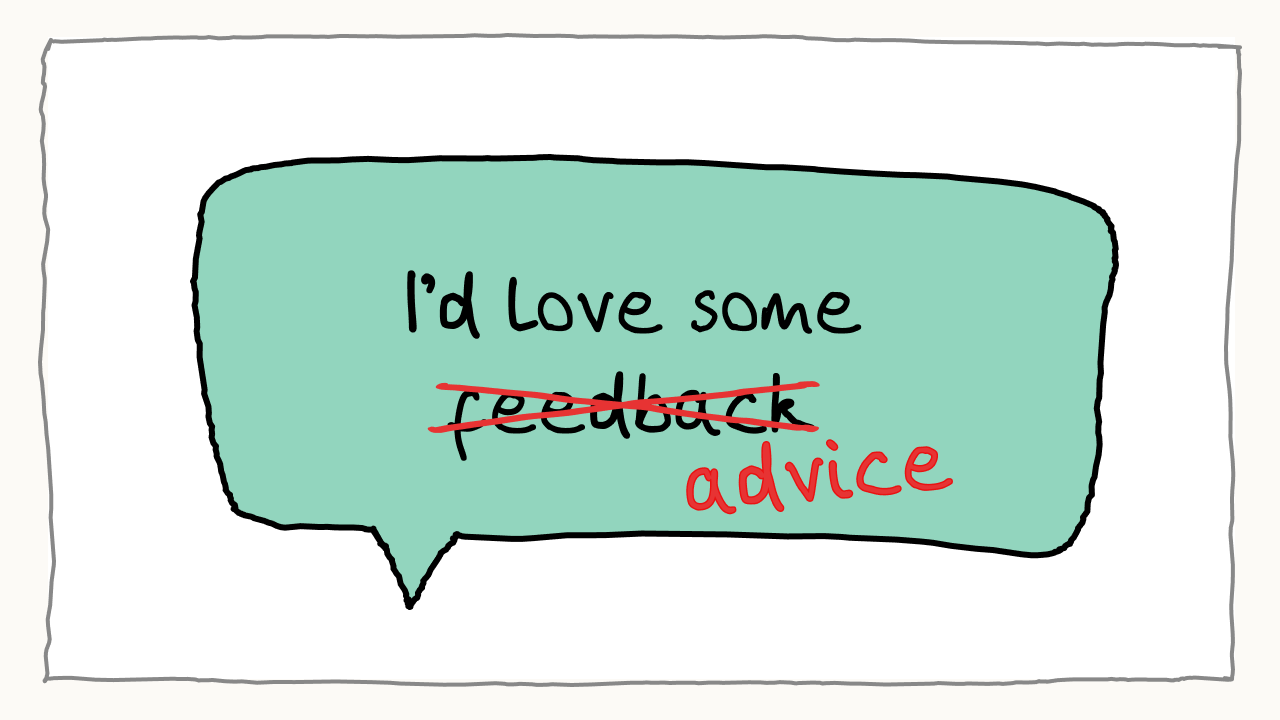How to Run Exceptional One-on-Ones
Written by Dave Bailey
Want to build a strong team? Learn how you can run effective 1on1s, as well as practical tips on what to do before, during, and after the meeting.
How effective are your one-on-ones?
Most managers will say theirs are great. However, one study has shown that employees often leave one-on-ones less motivated than their managers. That concerns me.
Typical one-on-ones are 30 to 60-minute meetings between teammates and their managers to help the teammate achieve their goals. By this definition, short status updates don’t qualify as one-on-ones. But conversations about well-being do, so they’re certainly worth including in any effective one-on-one.
Even though one-on-ones focus on the teammate’s success, both parties benefit from the meeting. Managers can directly improve their team’s performance and teammates can have their voice heard by management.
In practice, it’s hard to improve someone’s performance — but so is sharing honest feedback with your manager. And when performance doesn’t improve — and teammates don’t feel listened to — both sides start to disengage.
Both parties need to show up
After a decade of running one-on-ones with direct reports in my own companies, I now run one-on-ones with venture-backed CEOs, as their coach. It’s helped me clarify what makes one-on-ones work and what really drives performance.
The output of a successful one-on-one is simply the one or two small actions a report can take to develop their capabilities and move forward in achieving their goals.
I’ve experimented with a wide variety of formats — from unstructured conversations to going through sets of formal questions — and I don’t think the format is as important as how both parties show up for the session. So in this essay, I’ll set out some principles that will help both managers and their reports get the most out of one-on-ones.
Advice for reports
Most one-on-one training is targeted at managers. However, it’s generally agreed that this is the report’s meeting, and they should own the agenda. That’s why we’ll start here.
1. Clarify your goals — and own them
To focus on performance, you have to know what you’re trying to achieve. Yet few people clarify their goals.
You can group your goals into three categories:
- Business goals: what are you trying to achieve in your current role and how will you measure success? OKRs (objectives and key results) are a common way to structure business goals.
- Competency goals: what hard and soft skills and behaviours can help you improve your performance? Examples might include learning how to hold your team accountable, or delivering more engaging presentations.
- Personal goals: what other goals, which don’t fit the above categories, mean something to you? For example, is getting a promotion important? Changing your role? Getting back in shape?
We tend to focus on short-term business goals since they are the most urgent, but mastering new skills and making progress on personal goals is critical to long-term fulfilment and motivation. People often only reveal their personal goals when they’re ready to quit — prompting their manager to say, ‘If only you’d told me sooner!’ Don’t let that be you.
Business goals are often updated every 6–12 weeks, but behavioural and personal goals need regular updating too. Every few months, I recommend you spend one of your one-on-ones reviewing and renewing your goals.
Remember, achieving your goals is your responsibility — in fact, it’s your job. Your manager can help, but motivation and action start with you. If your goals aren’t 100% clear, take time to clarify them and make them a topic at your next one-on-one.
2. Prepare an update since your last one-on-one
There’s no getting around it — preparation leads to better outcomes. Luckily, it doesn’t take long. All my top-performing CEOs send me an update on their action items before each session. They take performance seriously and so should you.
Here’s a useful list of things to include in your update:
- The current status on metrics and key projects. If you already prepare something for your team update meeting, this is already done.
- A summary of how you spent your time last week. Taking 30 seconds to review your calendar and audit your time is revealing.
- An update on the action items from the last one-on-one. Accountability is key — and we’ll look more closely at this later.
Taking a few minutes to write this update helps keep your manager in the loop and helps you form the agenda for the meeting.
3. Decide on the highest-leverage thing to work on in the one-on-one
The agenda of a one-on-one is simply the two or three topics you’d like to work through with your manager. How should you select the right topics? I recommend three things:
- Reflect on your update: What key issues did you face last week, or are likely to face in the coming week? What’s taking more mental space than it should?
- Free-form journal, starting with ‘I’m feeling . . .’: Often, the real issues don’t appear on the status update because they’re happening in your head. Getting your emotions onto paper can clarify what (or who) is really challenging you.
- Ask yourself, ‘What would I say to my manager if there were no consequences?’: This always cuts straight to a core issue and it often involves your working relationship with your manager. Giving feedback is incredibly anxiety-inducing, so for a crash course, I recommend reading ‘How to Deliver Constructive Feedback in Difficult Situations’.
Here’s a range of topics that commonly come up in one-on-ones:
- Reviewing a recent work challenge
- Stress-testing a plan
- Better understanding a business strategy
- Managing a challenging relationship
- Thinking through some tricky communications
- Dealing with isolation/self-doubt
If you’re worried that being open about your challenges makes you look weak, don’t be. I’m here to say that admitting to your weaknesses (particularly the ones that everyone else can see) and being proactive about fixing them makes you look self-aware and competent.
Once you’ve written a quick update and a list of two or three topics to run through, I recommend sending them, along with your update, to your manager the day before your scheduled session. This gives your manager a chance to read and prepare as necessary.
4. Adopt a growth mindset

Your manager wants you to succeed — it’s the explicit purpose of your one-on-one — so I recommend approaching it with a ‘growth mindset’.
This means you’re open to, and actively looking for, new ways to improve. Ask yourself, ‘How can I get better at this?’
However, there are two alternative mindsets you need to watch out for: the ‘I’m the worst’ mindset and the ‘I’m the best’ mindset. Both will prevent growth by closing you off to new possibilities and ways of working.
A great manager will challenge you to go beyond what you think you’re capable of, and a great report is courageous enough to ‘take charge’, leave their comfort zone and try something new.
5. Ask for feedback . . . I mean, ‘advice’
Most people are conflict-averse and will avoid giving feedback if they can. Even CEOs will sometimes dodge giving feedback to one of their leaders (trust me, I know).
Improving your manager’s perception of you is the secret to career progression — but you need to know what their perception is before you can change it.
So, what’s the best way to ask for feedback from your manager? Firstly, seek feedback on something specific and current, like a recent meeting or task. Secondly, relabel feedback as ‘advice’. Research suggests that asking for advice is more effective at drawing out actionable improvements than simply asking for ‘feedback’.
And if your manager is a great coach, they’ll flip it back on you and get you to work out how you can improve yourself.
Advice for managers
You’re probably thinking by now that managers are getting off easy. Well, here are tips for managers who want to show up too.
1. Optimise for psychological safety
Psychological safety is a ‘shared belief that the team is safe for interpersonal risk taking.’ In other words, your report needs to feel they can be open and honest without you getting angry and calling them names.
You want to create a sense that you’re in this together. How can you create this sort of connection? Here are some useful prompts to help you get into the right mindset:
- Recognition: What is it about your report that makes you grateful for them?
- Curiosity: How might they be feeling?
- Consideration: What’s important to your report?
- Vulnerability: What are your own weaknesses that you’re trying to improve?
Taking a minute to connect and show you care is time well spent. When connection is established, begin the meeting with one of these questions:
- ‘What would you like to work through together?’
- ‘What topics would be most useful to discuss today?’
- ‘How can our time be most helpful to you?’
2. Default to coaching

Managers need to wear multiple hats. Sometimes they need to put on the ‘leader hat’ and paint a clear picture of success. Other times they need to wear the ‘mentor hat’ and share skills and experiences, particularly for inexperienced teammates.
But in most one-on-ones, you should keep your ‘coach hat’ on as much as possible. When you’re wearing the coach hat, you’re not providing answers. Instead, you’re:
- Asking questions: flipping the responsibility back on them
- Listening carefully: to what they’re saying, how they’re saying it, and what they’re not saying
- Synthesising: by playing their words back to them concisely
- Reminding them of their own goals: after all, we all forget them occasionally
- Challenging them: to get them out of their comfort zone
Breaking your tendency to provide answers is one of the hardest parts of coaching your team. However, you have to chomp on your tongue if you’re serious about developing leaders.
If you’re interested in learning more about coaching for managers and founders, sign-up here to receive my new series on the subject.
3. Make space for emotions (and some venting)
When I started out as a coach, I assumed my biggest value-add would be in providing guidance and new information . . . but I underestimated the value of just listening. And you might be underestimating it too.
When people come to you with their challenges, it’s safe to assume they have thought about them a lot. However, they may not have processed the emotions that come with them.
Getting emotions and thoughts out of your head is therapeutic, reducing their negative impact. By listening without judging, you build the trust needed to help your report analyse their thoughts and feelings more critically. This is what leads to self-awareness.
Our behaviours are driven by our emotions, so any lasting behaviour change needs to be accompanied by an emotional change too.
4. Provide accountability
What does it mean to hold someone accountable? To me, it means asking, ‘What happened?’ and then digging deeper. It’s uncomfortable to ask, so we frequently don’t do it.
In a one-on-one, you don’t want to ask about everything that happened or the meeting will last forever. You want to focus on the key actions you both agree are important to achieving your report’s goals.
These key actions may be obvious to the report — you just need to ask, ‘What will you do about this by the next session?’ Other times, you can set them as a challenge that pushes the report into doing something they wouldn’t otherwise do. They can agree with you or suggest something else — but you need to set the expectation that when a teammate agrees to an action, they will follow-through.
I recommend you identify one action item per topic, achievable by the next session. That way, the report can update you on their progress and you can drive the point home by asking, ‘Can I hold you to that?’
Recording and following up on action items is an act of service.
Remember, the actions aren’t chosen to help the manager — they’re to help the report. I send them to my reports by email, which takes a couple of minutes to do and avoids the ‘but I thought we agreed X’ conversation that nobody wants to have.
However, here’s a word of warning: be careful not to slip into the trap of solving your team’s problems when they could do so themselves. You may be doing this if you add items to your to-do list after every one-on-one. Try to delegate responsibility back onto your team, asking, ‘What can they do?’ before asking, ‘What can I do?’
5. Ask for feedback . . . I mean, ‘advice’ as well

When it comes to helping other people improve their performance, there’s always more to learn. And you can benefit from asking your report about how you can improve.
You might ask questions like:
- What do you think I should do differently?
- What would you do in my shoes?
- How can I be a better manager/coach to you?
Your success as a manager is limited by the success of your team — and therefore the success of your one-on-ones.
How to (re)design your one-on-ones
If your one-on-ones never change, they are going to go stagnant. Making occasional changes keeps them fresh. Discuss the effectiveness of your one-on-ones with each report to come up with new ideas you’d both like to try.
For example, you might change the frequency and length of the meetings by switching from weekly to biweekly, or from 30-minutes to 60-minutes (or vice versa). You might also experiment with more prescriptive formats, such as Bill Campbell’s performance, relationships, leadership, and innovation, or one of the many templates available online.
Any redesign is a good opportunity to re-establish the one-on-one relationship. I do this by asking three questions:
- Do I (still) have your permission to coach you?
- Will you bring your biggest challenges to our one-on-ones?
- When you agree to an action, will you commit to seeing it through?
A word on long one-to-one meetings
Long sessions aren’t as common as they should be. Conventional wisdom suggests they should be short so you can get them over with. However, in my experience, two-hour sessions can be transformational.
The first hour is similar to a regular session. But as you both relax into it, you’ll notice an awkwardness and just as you’re worried there’s nothing left to say, you’ll hear this:
I wasn’t sure if I should bring this up, but . . .’
That’s when the magic happens.
Long sessions are most useful when issues have built up over time and a strong sense of connection is needed to broach the subject. As many as 80% of sessions with my clients are two hours long, and I run two-hour sessions with each of my team every quarter.
In the days before COVID-19, we did this away from the office over a drink. At the moment, I’m running these extended sessions over the phone.
Great questions lead to great answers
Early in my coaching career, I was working with a high-profile CEO on an issue I had no clue about. We looked at the problem from all sorts of angles, but by the end of the session, neither of us knew how to solve it.
Convinced that I was about to get fired, I braced myself for the worst at the next session. But to my surprise, the client was upbeat.
‘Dave, I’ve had a massive breakthrough,’ he told me. ‘You asked me a question I couldn’t stop thinking about. And a couple of days later, the answer came to me in the shower. Problem solved!’
This is my parting message to managers. It doesn’t matter how you feel coming out of a one-on-one. It doesn’t matter how clear the plan is to you, or even if you know the answer. The only thing that matters is how your report feels, and which questions they take away from your one-on-one.
Your team can find a way . . . if they focus on the right questions. Your role is to give them that opportunity.
More resources on developing your team:
- Learn an advanced coaching technique called The Development Pipeline.
- Run group feedback sessions as a leadership team to uncover areas of opportunity.
- Take steps to ensure you build a culture where everyone gives feedback.
Originally published Jan 4, 2021, last updated Apr 8, 2024.
How do top founders actually scale?
I’ve coached CEOs for 10,000+ hours—here’s what works.
Join 17,000+ founders learning how to scale with clarity.
Unsubscribe any time.




